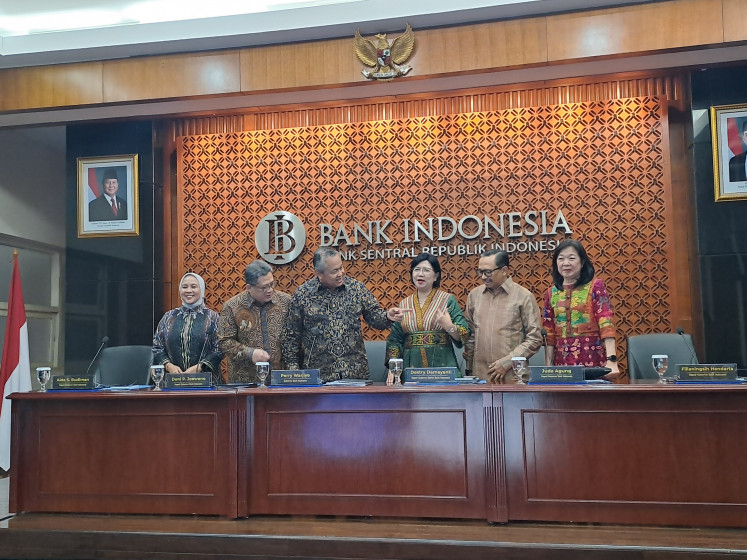Popular Reads
Top Results
Can't find what you're looking for?
View all search resultsPopular Reads
Top Results
Can't find what you're looking for?
View all search resultsPoverty rate rises in March as pandemic hits vulnerable communities
The poverty rate rose to 9.78 percent in March from 9.22 percent in September, BPS reported, as 26.42 million people were living below the poverty line as of March.
Change text size
Gift Premium Articles
to Anyone
 Residents wash at the edge of a Palembang River tributary in South Sumatra, on Feb. 21. Around 1.63 million Indonesians fell into poverty in March compared with September last year as the COVID-19 pandemic took its toll on the poor across the country, Statistics Indonesia (BPS) announced on Wednesday. (Antara/Nova Wahyudi )
Residents wash at the edge of a Palembang River tributary in South Sumatra, on Feb. 21. Around 1.63 million Indonesians fell into poverty in March compared with September last year as the COVID-19 pandemic took its toll on the poor across the country, Statistics Indonesia (BPS) announced on Wednesday. (Antara/Nova Wahyudi )
A
round 1.63 million Indonesians fell into poverty in March compared with September last year as the COVID-19 pandemic took its toll on the poor across the country, Statistics Indonesia (BPS) announced on Wednesday.
The poverty rate rose to 9.78 percent in March from 9.22 percent in September, BPS reported, as 26.42 million people were living below the poverty line as of March.
“The COVID-19 pandemic is taking a great toll on economic activity and adversely affecting people’s livelihoods,” said BPS head Suhariyanto in a virtual press briefing on Wednesday. “This pandemic is hitting the public hard, especially poorer communities.”
The rise in staple prices played a huge role in the poverty rate, he went on to say, pointing to the rice price as the biggest factor, followed by cigarettes, poultry and instant noodles.
The national poverty line is set at Rp 2.1 million (US$145.80) of income per family per month, with the highest poverty rate recorded in Papua with 26.6 percent of the total population and the lowest poverty rate was recorded in Bali (3.78 percent).
The pandemic is ravaging the economy as the government expects 4 million people to fall below the poverty line this year, making for a total of 28 million poor in the nation, or around 10.6 percent of the population.
Some 5.5 million people may lose their jobs this year, raising the number of total unemployed to 12.7 million people, according to estimates by National Development Planning Minister Suharso Monoarfa recently.
The job losses translate to losses in income and weaker consumer spending, threatening the country’s economy as more than half of its gross domestic product (GDP) comes from household spending.
In line with the rising poverty rate, the Gini ratio, which reflects inequality, rose to 0.381 in March, from 0.380 in September last year, as the gap between the rich and the poor remained high amid the pandemic.
According to data from the Finance Ministry, 70 percent of workers with monthly salaries up to Rp 1.8 million lost their income during the pandemic, while only 30 percent of workers with incomes up to Rp 7.2 million lost theirs, as the pandemic took a greater toll on low-income households.
The government is allocating a Rp 695.2 trillion stimulus package to prevent greater economic fallout and to cushion the pandemic’s blow on poor communities by strengthening social safety net programs and the country’s healthcare system.









